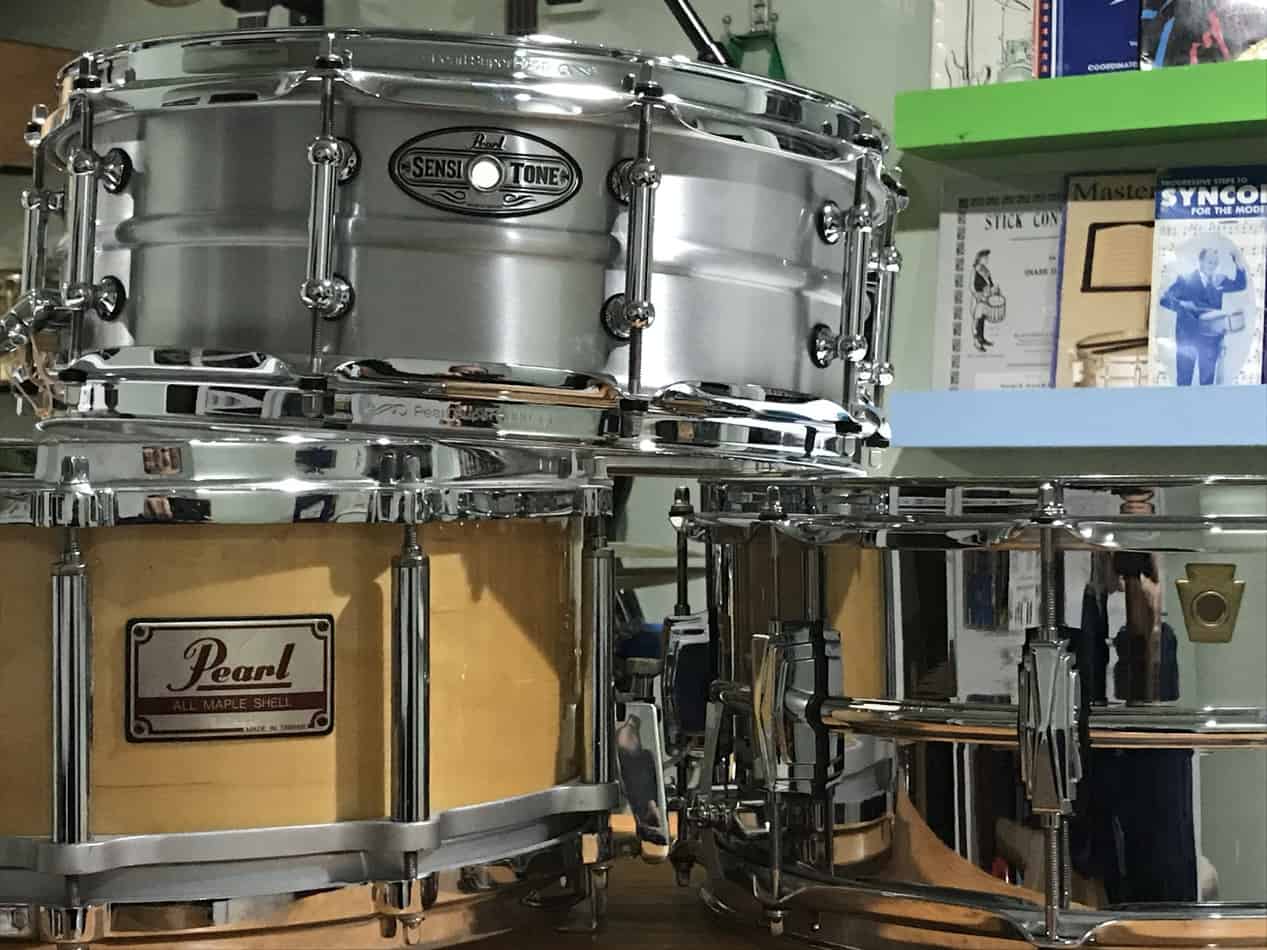Out of all the drums that make up a drum set, the snare drum is perhaps the most unique sound. You can change the kick a handful of ways, but the snare drum can come in so many forms that dramatically impact the sound. So what makes a snare drum sound so good?
The simple answer is: the drummer, heads, sticks, rims, shell, snares, and the room. The complexity comes from the fact that all of these variables can be adjusted in several ways, creating almost infinite good snare drum sound possibilities.
Recently, I found a question on The Art of Drumming, a popular Facebook group. The question asked: What makes a snare drum sound good? Although this question is something I work on almost daily, reading through the comments was fascinating.
The following list mostly comes from the comments of the post with some elaboration and prioritizing on my part. Some of these are in order of importance, but toward the end it gets tough to say what’s more important. Everything on this list needs to happen to make the snare drum sound good.
1. Proper Stroke
The way a snare drum is played has the biggest impact on how it will sound. Sure, these other things on the list are important, but not as important as how the stick makes contact with the drumhead and rim.
Whether the stroke is a rimshot or not, the end of the stick should contact the center of the drum. This will provide more control over how much the drum rings after being struck.
Training your brain to always strike the drum in the center of the head will help develop control. This will allow you to develop the accuracy to play other areas of the drum, which helps make whatever sound you want to achieve.
The playlist below includes videos about the fundamental strokes for drumming. It also has videos about rudiments and exercises to develop your hands.
2. Tuning
The snare drum sound depends on three primary tuning decisions.
- The first one is to decide if the snare should be high or low.
- The second issue is the intonation of the drumhead, which is how even the tension rods are pulling the head down beyond the bearing edge.
- Lastly, the relationship between the batter and resonant heads will impact the snare drum sound character.
Before you start cranking up the heads for a high crack, let’s get the drumhead intonation under control. Since it’s all about the tension on the head, make sure the head is on the drum as evenly as possible.
Once the head is on the drum and snug, tighten the tension rods following the sequence in the diagram below. Early in the process, you may find that some of the rods are significantly loose. Tighten them by hand and continue the sequence.
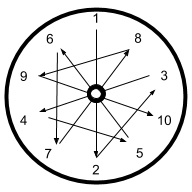
Place your finger in the center of the drumhead and tap the head near each tension rod to determine which rods to tighten. The goal is to make adjustments until each rod is close to on another when you tap on the head near rod.
The relationship between top and bottom head plays an important role in the snare drum sound. For example, crank the bottom head higher than the top and you’ll have a fat sound with plenty of attack.
3. Drumhead
The choice of drumhead depends on the kind of snare drum sound you want to achieve. Heads come in different thicknesses, one ply or two, and can beat coated or clear. Plus, the type of material the head is made of impacts the sound, too.
Thinner single ply heads resonate more and produce a more lively sound. If the head is single ply, it won’t have another layer to cancel out sound waves. This could be the sound you’re looking for, but it won’t be the kind of drumhead that will last long if you’re playing it hard.
The double ply coated head works for most players and most drums. I like to go back and forth between the single and double ply, and I’ve learned that the single ply works well on certain drums. The double ply, however, sounds good on all of my drums.
Coated drumheads offer response for brushes as well as more definition on the lighter ghost notes. Since your snare drum sound is mostly about dynamic range and response to various strokes, you’ll want the coated head to do some of the heavy lifting.
4. Rims
Let’s talk about diecast hoops versus flanged hoops. The differences in projection and resonation can be an issue if you’re not aware of how each type of drum hoop responds.
Diecast hoops add more mass to the equation and do not carry vibration well. This leads to a less resonant snare drum sound, which is bad if it’s not what you want. The diecast hoop, however, will produce a heavier drumstick sound, which means more wood sound on cross sticks and rimshots.
The flanged hoop lets the drum ring more than the diecast hoop. It requires more precision to get a consistent sound from the drum, especially at louder volumes. The cross stick sound, for example, has a very specific sweet spot that can be harder to find with a flanged hoop.
I have snare drums with flanged hoops and drums with diecast. Both of them sound good, it just depends on the mood I’m in, but I usually gravitate toward the flanged hoops to get a more resonant sound.
5. Snares
The snare sound comes from the snares that vibrate on the bottom head, also called the snare-side head. You can achieve different sounds based on (1) the type of material used to make the snares, (2) how many snare wires are in a set, and (3) the tension the strainer places on the snares.
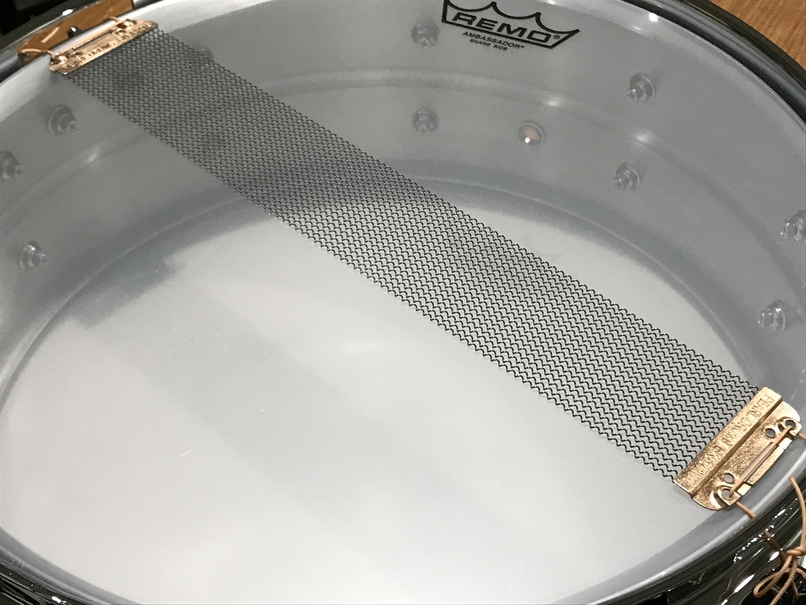
Since most of us are not going to change the snares on our drums, let’s focus on the strainer tension.
The strainer is the hardware on the drum that tightens or loosens the tension on the snares. You can turn the knob to make these adjustments or simply throw the lever to disengage the snares completely.
Tighter snares will choke off the resonance and produce a crisper sound, while the looser tension will open up the drum and you’ll hear the snares buzz for a long time. The range of tension in between the tightest and loosest settings is generally where the snare drum sound finds its best tone and resonance.
But who says you need to have the snares engaged to get a good sound out of the drum? Snares off is one of my favorite sounds. Drummers like Danny Carey of Tool have mastered this snare drum sound, so check him out of you have yet to experience it.
6. Shell
Snare drum shells are made of metals and woods. Depending on the material, the low, mid, or high frequencies can vary. Plus, the amount of ring or dryness differs from one material to another.
Common wood snare drums include maple, birch, beech, mahogany, oak, and poplar. With the exception of birch, wood drum shells produce more low and mid frequencies than highs. Birch cuts through mixes well without losing the body that low frequencies provide.
Metal shells are often steel, aluminum, brass, copper, or bronze. Although all of the metals have a lot of high frequencies, each type of metal has a different character based on the amount of lows or mids it produces.
Steel has the most high frequencies in relation to its low frequencies and more mids than lows, which is why a steel snare drum rimshot cuts through the mix. That John Bonham snare drum sound has so much high and mid frequencies that it carves out its own space in the mix.
Brass and aluminum also have more highs than mids or lows, but these also have more lows than mids. The lows tame the mids a bit more and provide more darkness to the character, especially with bronze because it has the most low frequencies.
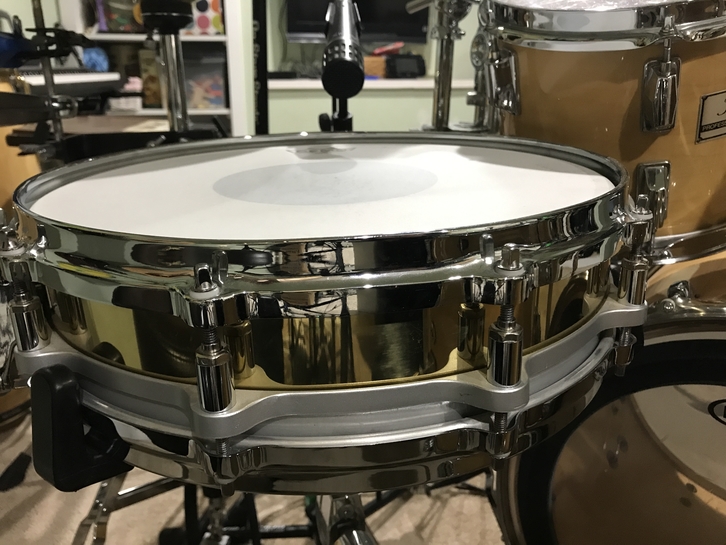
7. Diameter
The diameter of the drum influences the pitch range of the drum. Smaller diameter drums, like a 10 or 12 inch, create higher pitched sounds, while larger diameter drums, like a 14 or 15 inch, created lower pitched sounds.
A good snare drum sound will come from a well tuned drum that respects its diameter in relation to the pitch it’s tuned to. You can crank up a larger diameter drum so it’s high pitched, but the sound quality can drop off fast.
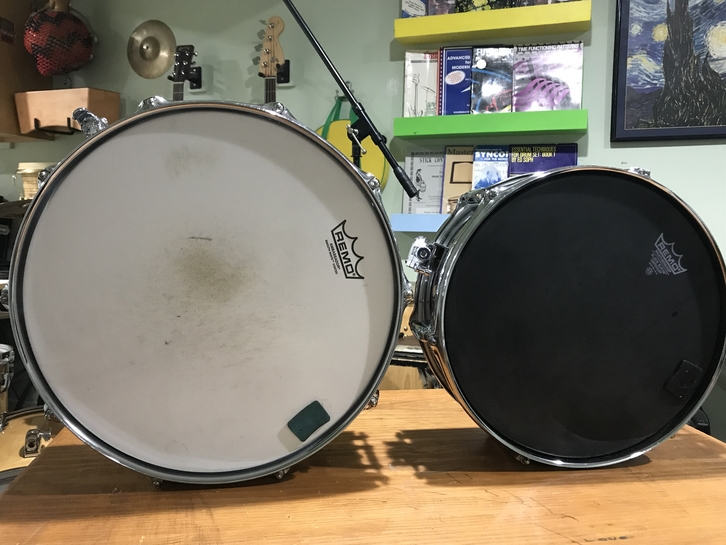
8. Depth
The drum depth provides body to the sound. It moves more air volume the deeper the drum gets. This is important because smaller diameter drums, for example, can have a full sound if they are on the deeper side of the dimensions.
Different depths don’t impact the pitch of the drum. If a smaller diameter drum is on the deeper side, like a 7 inch depth, the added body to the sound can make up for the lack in diameter.
9. Sticks
The size of the stick and the shape of the tip matter to the snare drum sound. Larger sticks have more mass and therefore deliver more force to the drum, giving you more volume. The rounder tips provide more attack, while the tips with more surface area for striking provide more smack.
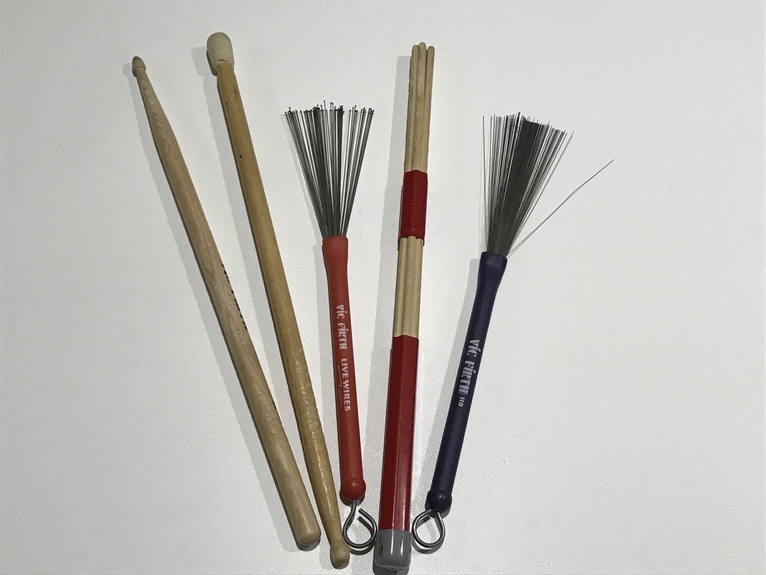
Different types of sticks also produce an obvious difference in sound. If you use rods, the attack is spread out more over the rods, which takes away from the mass of the attack. Brushes and soft mallets produce an entirely different sound than sticks or rods but are equally important when it comes to producing good snare drum sounds.
If you’re interested in more information about different sounds, this article includes 10 things you can do to change the sound and create natural effects.
10. Microphone
The quality of the microphone is important, but it doesn’t need to be the most expensive to sound good. A Shure SM57 is the industry standard, and other really good options, like the Audix i5, do not cost much more.
Mic placement is a key factor in capturing a good snare drum sound. As long as the other factors on this list are in good shape, the angle of the mic and distance from the drum will yield different results. For example closer to the drum captures more rim sound, and aimed more toward the center of the drumhead takes away some of the ring.
For more information on snare drum microphones, check out this article comparing the 57 and i5.
11. Compression
Snare drum compression settings cannot be standardized to achieve a good snare drum sound because each mixing session is different. The snare may be need to be punchier in one song and more dynamic in the next.
The best tip I can give you is to not over compress the snare drum. Less is more. If you want to compress the snare for more punch, try a slow attack and fast release.
The second best tip for finding these settings is to make sure the compression is open and closed before the next snare hit occurs. You want the compress to release in time to open again for the next hit.
Lastly, compression is sometimes better on the drum buss. If you compress the snare channel and the drum buss, you will multiply the compression. I’ve made this mistake too many times before I realized that I wasn’t considering the cumulative effect of the entire chain of processing.
12. Effects
Reverb is my favorite snare drum effect. Delay is my second, and the two combined can be amazing. But like anything else with mixing, they can be a disaster, too.
I like to use reverb to move the snare drum into a different depth of the mix. If you think about the volume as the Y axis and the panner as the X axis, the reverb can be used to establish space on the Z axis. I’m not sure if this is scientifically accurate, but it makes sense in terms of how it sounds, which is the most important thing to consider when mixing a snare drum sound.
But remember to do no harm. Good mixing engineers will avoid making a good sounding drum sound like something else. Too much effect can take away from the hard work we do to establish a good sound, so the engineer you are working with plays a huge role in the sound.
13. Engineer
Mixing engineers, whether in a live situation or a recording session, have a lot to offer when it comes to the snare sound. A good sound is not always a loud sound. Sometimes the engineer simply needs to eq the snare or use compression or reverb effectively to carve a better place in the mix.
In small bars and clubs, you may not even have an engineer. I try to use conservative levels on the faders for all instruments and use the buss for each group, as well as the main buss, to increase volume.
Equalization for snare drum can usually adjust the fatness, deal with annoying ring, and cut through a mix. Although each drum is different, the eq settings for fatter sounds are usually between 150 hz and 450.
To find the more desirable frequencies, and the less desirable, set the eq to a frequency, increase the gain on the frequency band, and change the frequency to find the problem. Then, cut the frequency that you don’t want. Sometimes cutting will bring more clarity than adding.
14. Your Ears
Your ears are the last on this list because they only develop a strong sense of what sounds good after you master many of the other techniques and tips. But once the snare drum sound is good, your ears will become trained to be critical of the sound, giving you the information you need to make adjustments.
Your ears will become the most important factor in determining how to get a good snare drum sound.


